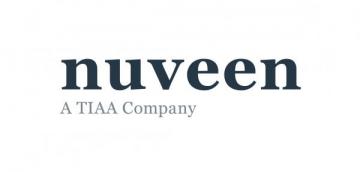
Crispin Royle-Davies, managing director and senior research analyst for public real assets at Nuveen, speaks to PWM about the key role of real estate assets in private portfolios
Among the attractive characteristics of real estate in a wider portfolio are the diversification it offers alongside traditional asset classes of equities and fixed income, steady income from contractual arrangements in the leases and inflation protection.
Topics under discussion
- Focus on carbon reduction
- Regulatory penalties for polluters
- Listed real estate stocks versus direct investment
Its promoters also say it can offer differing strategies, depending on the investor’s own viewpoint on markets. “If you are positive about retail sales growth, then invest in a shopping centre,” says Crispin Royle-Davies, managing director and senior research analyst for public real assets at Nuveen. “If you are more interested in the effects of an ageing population, then you can invest in healthcare real estate or nursing homes. Whatever thesis you might hold about different parts of the economy, there’s a real-estate investment there that could be very well suited to you.”
Of all the possible metrics available to measure the environmental, social and governance credentials of investments, Nuveen has opted for the carbon reduction lens with which to assess potential real-estate holdings. “We’ve chosen carbon reduction because climate change is the big issue facing humanity today,” he says. “If we don’t change the trajectory of global carbon emissions, then more and more extreme events are likely to impact humanity, that will have more and more dramatic effects on lots of our daily lives. And it’s important to realise that real estate, both in its operation, and also in its construction, is responsible for 40 per cent of global carbon emissions. If you don’t focus on carbon emissions in real estate, then you have a much bigger problem for reducing overall emissions in the economy.”
As a fund manager, an emphasis on these emissions makes sense because they are universal and can be quantitatively measured in a transparent fashion. “So you can compare them across different types of business and property sub-sectors and they still have the same focus of what we’re trying to achieve, which is reduction of carbon emissions in line with the Paris agreement,” says Mr Royle-Davies.
“You don’t often have that with other different types of sustainability metric, as valid as they might be, as that comparability can get lost. And then we think we can build a product based around that, which is going to deliver that real world outcome of emissions reductions for end-investors.”
Environmentally friendly buildings enjoy major financial benefits, he says, including lower operating costs which attract tenants, but it is the solar energy-powered premises which have been of particular interest to Nuveen.
“There are billions of square feet across the world’s industrial warehouse roofs; at best, they’re kind of nothing, and at worst were actually a liability because you had to repair and fix the roof every five or ten years,” he says. “But now these are the basis for vast solar panel arrays that are generating returns into the early teens, often with government subsidies attached to them.”
There are also key challenges to investing in this market, warns Mr Royle-Davies, describing issues with the industrial sector, which enjoyed a strong leasing year and rental growth in 2022, with vacancies at record lows.
“The repricing of those assets, on the back of increases in interest rates was quite severe,” he says. “We have to judge two markets at once, not just what the rental streams are going to be, but determining the value that the equity market will place on those rental streams. So, we have to juggle those two things at the same time. That is the difficult and analytical role we have.”
For more information, please visit: www.nuveen.com/impact




